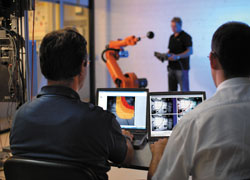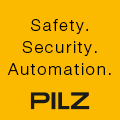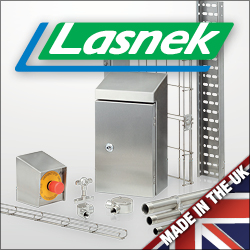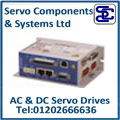
Posted to News on 19th Dec 2006, 07:40
Pilz unveils SafetyEYE 3D vision-based safety system
Pilz is unveiling the SafetyEYE vision-based safety concept, opening up new opportunities for automation in factories and elsewhere. The safe camera system for three-dimensional zone monitoring was developed by Pilz in conjunction with DaimlerChrysler. Where today's applications still require a multitude of sensors, SafetyEYE places a customised, three-dimensional protective cocoon around the danger zone. Detection zones can be configured flexibly and quickly on the PC. SafetyEYE can protect, control and monitor - all in just one system. Users in the safety sector benefit from increased flexibility and productivity, while the security sector benefits from uninterrupted object monitoring and access guarding.

SafetyEYE is much more than just a sensor; it is the basis for a technology that safely detects objects in a three-dimensional zone. Renate Pilz, Pilz's Managing Partner, comments: "So, once more, we can present an innovation that helps users to increase productivity and reduce costs."
The safe camera system is suitable for a wide range of industries: from machining centres to the tyre and packaging industry, through to high-bay racking systems and automatic car parks.
Limitations of current safety systems
Consider the example of a robot workstation comprising one or more robots and protected by safety fences. The robots generally require additional protective devices such as light grids and laser scanners in conjunction with an area limit switch. If someone enters or remains in the danger zone, these devices will detect it. However, current safety-related systems have some significant disadvantages. Optoelectronic protective devices are unable to monitor zones - at best, they monitor planes. If there is no visual contact then the workstation must also be protected using pressure-sensitive mats. So uninterrupted monitoring of a robot's operating range is only possible with a great deal of technical investment, if at all.
Another factor is that standard protective devices stop the robot immediately in the case of danger. The robot must be returned to its exact position prior to the stop in order to restart. This costs time and also impacts on subsequent workstations in the production line. And there is a third aspect too: the large number of different components and the complex wiring they involve not only makes it expensive to safeguard a robot workstation, but also has a negative impact on its availability.
Joint expertise
Pilz started to think about a new concept for zone monitoring and developed the idea of a safe camera system. In Sindelfingen, Germany, the process development, automation and control technology engineers at DaimlerChrysler was also considering some new monitoring strategies. Their idea was to use a combination of cameras to enable the monitored detection zone to be reproduced in three dimensions. It would then be possible to use image processing algorithms to detect objects that encroached into the danger zone. Visual assistance systems were used as the starting point; these were developed in the technical image processing laboratory at DaimlerChrysler's research centre in Ulm, to make car drivers aware of hazards. That was how the two project partners came together. While DaimlerChrysler contributed the appropriate algorithms for three-dimensional image evaluation, it was Pilz's task to make these algorithms suitable for industrial use and then develop and manufacture the system.
Control, monitor and protect
The overall system is made up of three components: the sensing device, a high-performance computer and a programmable safety and control system. The sensing device consists of three highly dynamic cameras and provides the image data from the zone that is being monitored.
A high-performance computer operates as the analysis unit, receiving the camera's image data via fibre-optic cables and working out a three-dimensional image using highly complex and safe algorithms. This way it is possible to observe objects three-dimensionally and to define their position exactly. This information is then superimposed with the detection zones configured within the system to determine whether there has been a detection zone violation, for example. The computer passes the image processing results to the PSS programmable safety and control system; with its inputs and outputs, the PSS is the interface to the machine controller and controls the whole SafetyEYE operation. If the analysis unit signals that the detection zone has been violated, the configurable outputs are shut down. Connection to the periphery can also be via the SafetyBUS p safe bus system; in future this will also be possible via the SafetyNET p Ethernet. The detection zones and warning zones, as well as all the other parameters required to operate the safe camera system, can be set up using the configuration PC and a special software package.
Preventing downtime
A robot workstation that is safeguarded using SafetyEYE, for example, will be fully open in its operation, and restrictive barriers are no longer necessary. The sensing device sits above the workstation and has a complete overview of the robot's operating range. So the possibility of manipulation is excluded from the outset. Just one glance at the monitor shows that safety technology is at work. Colour, semi-transparent cubes and cuboids - the three-dimensional warning and detection zones - are superimposed on to the images from the cameras. The robot moves within these zone segments during its work cycle. The danger zones are defined in the form of a virtual envelope, which incorporates the warning zones and detection zones. Only objects that enter these zones are potentially at risk.
A special feature of SafetyEYE is that a detection zone violation does not automatically lead to an emergency stop. Should a worker infringe the virtual detection zone at a point the robot would still take several seconds to reach, the control technology ensures that the robot advances at extremely reduced speed. If the worker is alerted through a warning signal and steps back, the robot will return to normal speed. There will only be an emergency stop if the worker enters the immediate danger zone. This is a clear advantage over conventional protective devices that trigger an immediate standstill in the case of danger. With SafetyEYE, processes can be precision controlled and can have flexible safeguards.
Configure of warning and protection zones
Detection zones and warning zones can be combined into complex zone arrangements and are therefore easy to manage, as they can be configured quickly and intuitively on the PC. If the various operating modes on a machine require different zone arrangements, these can be switched dynamically during the machine's working cycle, via the safe bus system SafetyBUS p or via the digital inputs on the PSS programmable safety and control system. Users have flexibility because, once detection zones have been defined, they can be readily adapted in the SafetyEYE Configurator. So the monitoring of detection zones are no longer based on technical needs but on the requirements of the user's process cycles, which can be designed with the utmost flexibility.
It only takes a few hours to install SafetyEYE and configure the detection zones. To position, set up and check conventional protective devices, on the other hand, takes at least a day. And it is also claimed to be more economical to use SafetyEYE. When a detection zone has been violated, an integrated diagnostic function reduces downtimes to a minimum.
Interaction between man and machine
The safe camera system is said to offer more compared to traditional sensor technology: you can protect, control and monitor with just one system. SafetyEYE can also perform standard (automation) control functions. And with SafetyEYE it is also possible to monitor several independent detection zones. Not only does that lower the cost, it also reduces the number of components to a minimum. The ability to connect directly to bus systems such as SafetyBUS p and, in future, SafetyNET p brings further savings in terms of material and installation.
SafetyEYE protects plants from a bird's eye view, enabling man and machine to work together in harmony. Requirements from the widest range of mechanical engineering applications can be implemented using the safe camera system.
Security applications
While safety describes the protection of the environment from an object, security is concerned with protecting an object from the environment. This includes access protection on buildings or monitoring exhibits at museums, for example. SafetyEYE keeps valuable objects continuously in its sight because, unlike conventional protective devices, is does not just monitor one plane. Renate Pilz concludes: "Camera-based image processing will revolutionise optical sensor technology, and not only in the industrial sector. We are convinced that the SafetyEYE innovation faces an excellent future in the security sector too."
Want the latest machine building news straight to your inbox? Become a MachineBuilding member for free today >>



















